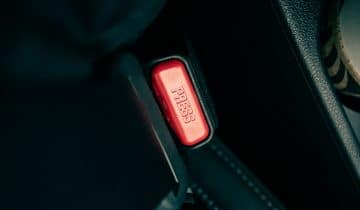It is understandable enough for the average person to not know about the nitty-gritty of their car. If you currently have seat belt issues and you’re wondering how to fix your car seat belt retractor, you should figure out which kind of retractor you have first. Luckily, it is not that complicated.
There are only two types of retractors that are used in seat belts.
Automatic Locking Retractor (ALR)
An ALR locks as soon as the continuous spooling of the belt out stops. As soon as the occupant pulls his or her lap belt into place, and the seat belt tongue gets inserted into the buckle, the automatic locking retractor then lets the extra webbing of the seat belt retract into the retractor up to the point wherein it is tight around the occupant’s hips. No further webbing will be released as it will be prevented from doing so.
Once the webbing becomes locked into place, the occupant can feel uncomfortable or tight when he or she tries to move since no more webbing can be drawn from the retractor. A common way of referring to this function is “child restraint mode,” as the automatic locking retractor function is often used to secure the seating of children. While the design of ALRs is quite dated, it is still quite popular nowadays.
Emergency Locking Retractor (ELR)
The ELR is a seat belt retractor that only locks in response to a vehicle’s quick deceleration or the seat belt webbing spooling out rapidly from the retractor. It allows for a more comfortable seat belt assembly in comparison to the automatic locking retractor. The essence of the ELR’s design is to let the seat belt webbing move freely as soon as the seat belt is in place, but in the event of a crash, it will lock the webbing immediately.
The locking sensitivity of an emergency locking retractor has been an important issue since there is a high need for assurance that the retractor can lock early enough during a collision. It should also not be so sensitive that it will cause a nuisance when locking in the midst of normal driving conditions.
There are two kinds of functions in an emergency locking retractor. The first one is the webbing withdrawal rate sensitivity. The second one is vehicle deceleration sensitivity. An emergency locking retractor’s vehicle sensibility function responds directly to a 0.7 g acceleration pulse. In that case, a lock-up usually occurs within a short timespan. If an occupant correctly puts on a seat belt with an emergency locking retractor, making sure that there is not too much slack in the belt, the occupant will be restrained correctly during rapid deceleration of the vehicle.
However, a seat belt with an ELR only cannot be used to hold the seat of a child in place. It will lock in a crash still, but the child’s seat could move enough to hit another part of the vehicle.
Conclusion
Knowing the difference between an ALR and ELR is key, especially so you can be prepared in case of accidents. Before you travel, it is best to make sure that your vehicle is in tip-top shape. See to it that you get your car regularly checked out and have routine maintenance done as needed. Most importantly, get seat belt repair done only by a trusted professional.
Need to get seat belt repairs done? Contact Safety Restore today! We are the world’s leader in post-accident restorations, specializing in airbag modules and seatbelt repairs.


